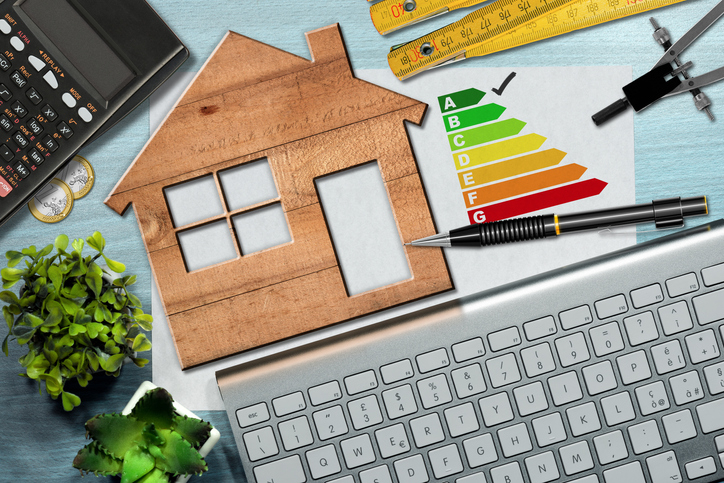because Italy has to walk more than the others in Europe

Environment, quality of life, health, economy, labor market and society. Considering that buildings are responsible for about 40% of energy consumption in the European Union and for 36% of energy-related greenhouse gas emissions, many elements come into play that no longer delay the energy requalification of Italian real estate assets and inspire the EU Green House Directive . According to Directive 2018/844/EU on the energy efficiency of buildings (EPBD – Energy Performance of Buildings Directive), each country must define its own minimum standards for the energy efficiency of buildings by 2027 and fully adopt them from 2030. In particular, the draft directive as part of the “Fit for 55 “Package stipulates that public buildings and non-residential buildings must achieve at least energy class F by 2027 and energy class E after three years. Three more years of tolerance for residential properties, which must instead achieve at least energy class F by 2030, class E by 2033 and class D by 2040. With the ambitious goal of zero emissions Class A for all buildings by 2050 (there are ten in total from the highest A4 to the lowest G). Currently there is no explicit mention of a ban on the sale or rental of the most polluting buildings and the choice is left to the respective countries.
How many greenhouses do we have in Italy?
But the good intentions and even more so the commitments in Italy collide with the harsh reality: according to Confedilizia indeed more than 9 million buildings out of 12.2 million would be out of order. At least the 74% of properties in Italy It was built before all energy saving and anti-seismic legislation came into force. And the energy certificates issued in 2020 relate in 75.4% of cases on objects of emission classes E, F, G. According to Enea CTI monitoring, the latter make up more than a third (35.3%).
Such a short-term crackdown would burden taxpayers expensive renovations for two out of three properties at an already difficult time for the economy and would devalue properties with lower energy ratings. Confedilizia’s warning is clear: in many cases, the interventions required for greenhouses would not even be physically feasible due to the particular characteristics of the buildings concerned. In addition, the very short times would shake the market, with a disproportionate increase in prices, the impossibility of finding raw materials, scaffolding, skilled workers, specialist companies, professionals. But how much are the renovations?
renovation costs
According to Enea calculations, in a condominium with around twenty apartments it should be possible to “jump” three energy classes by spending. around 30,000 euros for a single-family house completely re-develop, but The cost of setting it up alone would be around 10-15,000 euros. According to estimates by Gianfranco NavoneManaging Director of First Real srl, Company dealing with real estate services is the average expense about 2,000 euros per square meter for a complete refurbishment and no less than 1,000 euros per square meter for a partial adaptation. Also in line with these estimates is Habitissimo.it, the online platform that connects the supply and demand of construction professionals for construction and renovation works, which confirms the thermal jacket to insulate the home at the top of the most onerous works, with around 60%. of total expenditure and replacement of windows. This is followed by the installation of a photovoltaic system and the replacement of the old heating system with a powerful gas boiler or a heat pump. The costs would further increase if you decide to refurbish the roof and underfloor heating.
Given this investment, not exactly within reach for all budgets, according to the last one Annual report on energy efficiency presented by Aeneas (the national agency for new technologies, energy and sustainable economic development), Improvements to green homes can result in consumption savings of up to 60% and increase property values by up to approximately 30%. In particular, from the data published by Immobiliare.it, it is estimated that a two-room apartment of about 65 square meters in an almost central area, if it is class A, costs 29.18% more than a class C in Florence on the 21st, 6% more in Rome and 18.2% more in Milan. Finally, the price difference between a class C and a class G for a property of the same size is 14.7% in Turin, 11.8% in Milan and 7.8% in Rome. This evidence is confirmed by Navone himself:
“The problem is related not only to insufficient savings, but also to the potential payback of the investments made. It is advisable to assess the attractiveness of the property before starting the renovation of the same, in order to understand what percentage of the increase in value due to the energy renovation will recoup the investment made. For example, if you move into a house in a city and in a poorly developed and sought-after location, you run the risk not pay back the costs incurred for the energetic renovation and the game would not be worth the candle“.
The Italian government is now involved in cooperation with business associations Delivering reassuring messages about the EU’s greenhouse proposal, including plans to introduce an incentive framework to mitigate its potential impact. The directive itself requires member states to take appropriate financial measures to help families in difficulty comply with the rules. Easily said, but not done when you consider that member states’ coffers are already under pressure from the fight against the cost of living.
We will see if the draft is changed given the perplexity that has appeared in countries like Italy. The final version will arrive on the table of the parliamentary commission ITRE (Industry, Research and Energy) on February 9, 2023. The discussion promises to be complex over 1,500 changes. The process then continues in the Strasbourg hall, and the text to be voted on must then go through a further negotiation phase in which the EU Council, consisting of the heads of state and government of the 27 member countries, is also involved.





